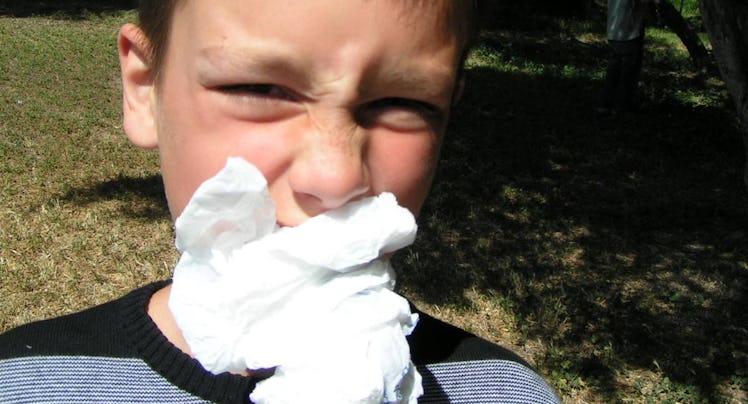Yeah, Parents Are Just Gambling on Allergy Medications
Research suggests that the American approach to treating allergies is basically ¯\_(ツ)_/¯.

As trees and flowers wind down the foreplay portion of their annual orgy, a new study is illustrating that many parents don’t know how to select allergy medications for their kids.University of Michigan researchers found that roughly one in seven adults dosing kids with allergy meds are using medicines created for adults and almost one in five parents were failing to check expiration dates. The conclusion? When it comes to allergy meds, a lot of parents are just rolling the dice.
The report, from C.S. Mott Children’s Hospital National Poll on Children’s Health, is based on a nationally representative sample of 1,066 parents. The caregivers, who had children between the ages of 6- to 12-years old, responded to survey questions regarding the administration of allergy medication to their snot-nosed kids. They seemed to have responded honestly, though the research report does not specify whether or not anyone answered the questions with a series of shruggies (¯\_(ツ)_/¯).
Researchers found that 85 percent of the parents who had given their children allergy medication often opted for what was already in the medicine cabinet. Most (61 percent) had stocked that cabinet with allergy meds recommended by a physician. However, 32 percent of parents purchased meds on the advice of family and friends.
It’s understandable why parents would be casting around for help amid a sea of options. A search on Amazon.com turns up a full 309 options in the children’s allergy category. And a trip to the local pharmacy puts parents in front of shelves loaded with a dizzying array of choices, all of which have different directions and applications. For instance, Bayer’s Clarispray for children is indicated for congestion and warns parents that their kid’s growth will slow during use, which should only be one spray in each nostril daily. Children’s Benadryl, on the other hand, is formulated to help with a runny nose and can be given once every four hours. These products are in the same aisle and packaged similarly, but they are fundamentally different on a chemical level.
Researchers note that without proper direction or label reading, parents could be improperly medicating children. It would be easy to mistakenly give a decongestant for a runny nose and an antihistamine for a congested one. That ceases to be ineffective and becomes dangerous when dosage cups start getting mixed up. Guesstimations based on the wrong size shot can go awry.
And the struggle gets real right now. A look at the national pollen map at pollen.com shows that well over a third of the country has a heightened mid-April pollen count. That’s a lot of miserable kids and many more miserable parents. That said, University of Michigan researchers urge parents to seek the advice of a doctor if they’re unsure of the most appropriate way to soothe their kid’s symptoms. There’s no harm in asking friends too — just remember that they probably don’t know anything.
This article was originally published on